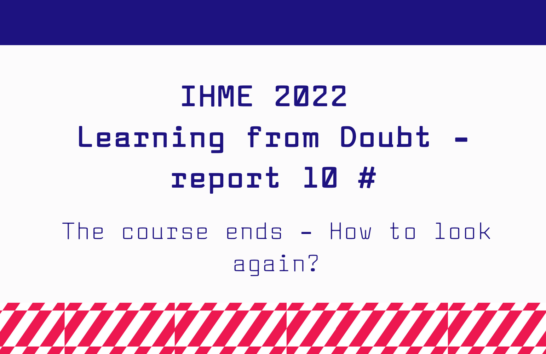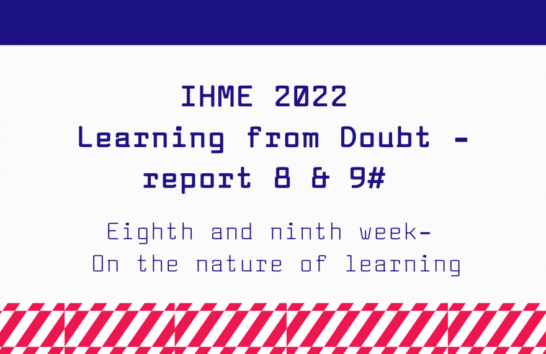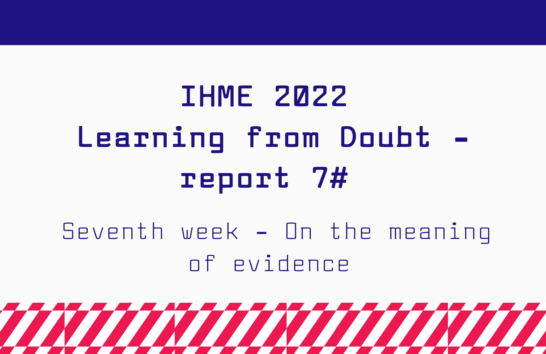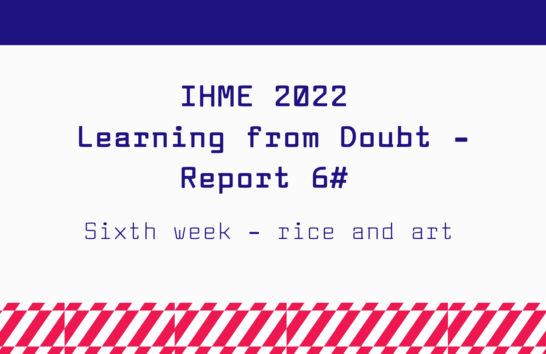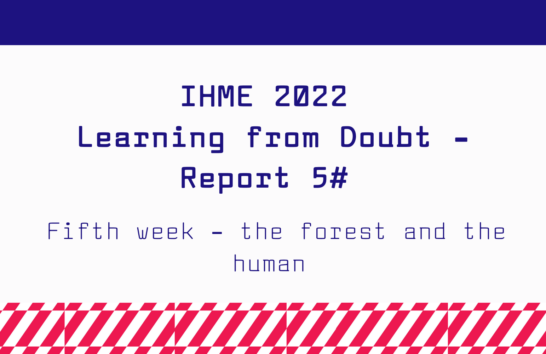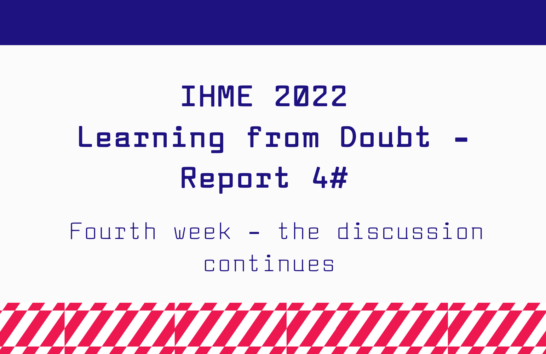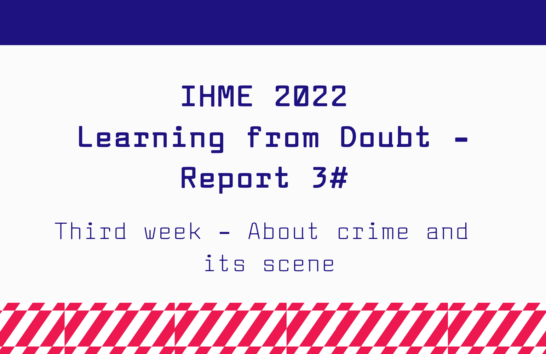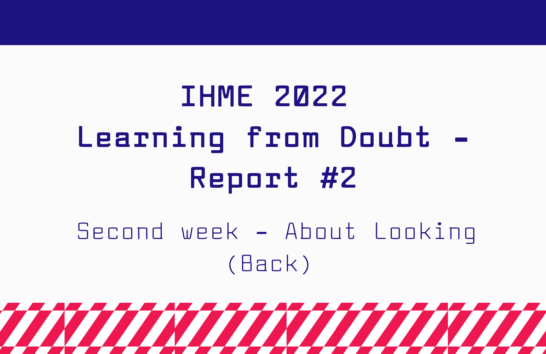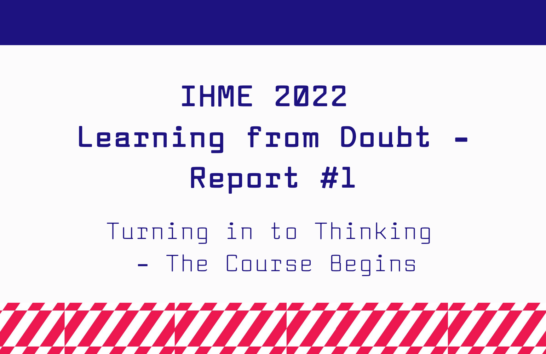Course reports
IHME 2022 Commission Report 4#
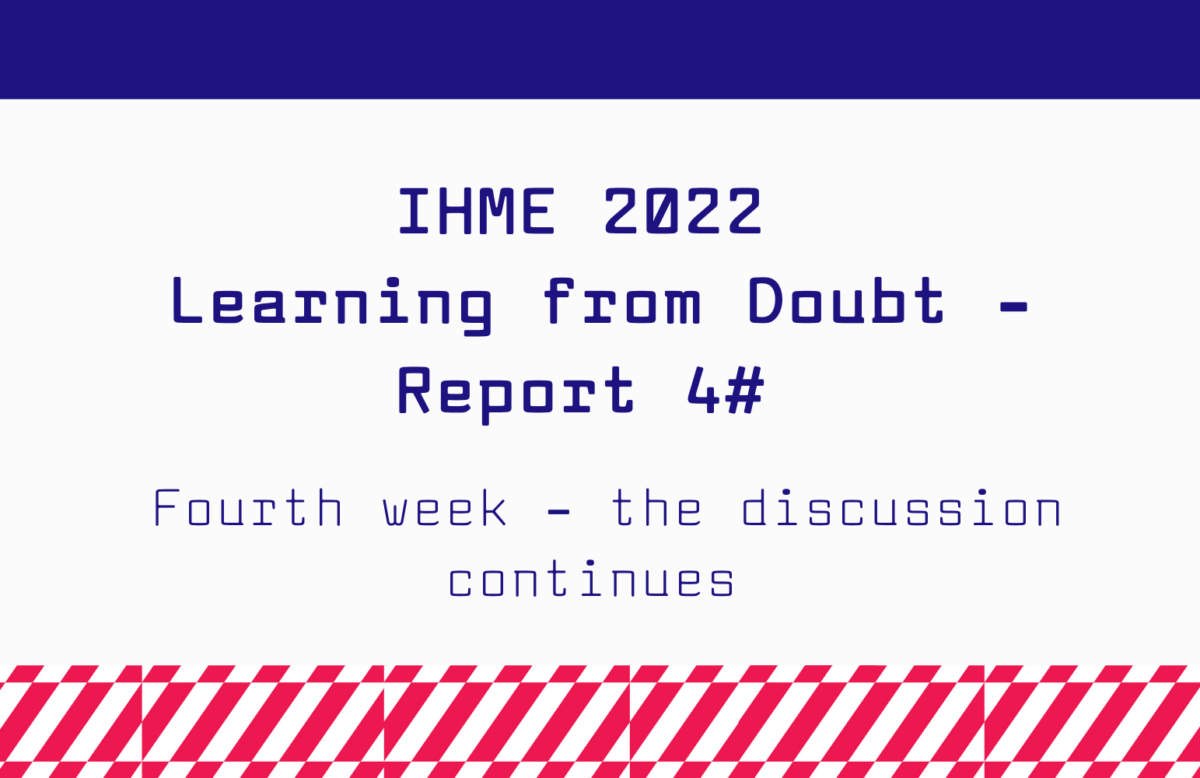
Fourth week – the discussion continues
The fourth week of Learning from Doubt again begins with a meeting with artist Amar Kanwar. The aim is to discuss the previous week’s films, The Scene of Crime and A Love Story, and gradually to get to know The Sovereign Forest in more detail. Last week served as an introduction to The Sovereign Forest, now we are taking a closer look. The course proceeds systematically: the texts and works included in this week’s course materials will be discussed again at next week’s meeting.
The initial meeting for the fourth week is a good example of Kanwar’s way of building Learning from Doubt on top of what has been presented earlier, and considering any questions and answers that may arise later. The structure of the course stresses the way that it is a collective endeavour, thinking and asking questions together. Indeed, Kanwar says that what is done on this course will impact any future versions of Learning from Doubt and The Sovereign Forest.
The Exhibition
The fourth week is the first part of a two-part unit called The Exhibition. The week’s contents are in four parts: in addition to the meeting and reading matter, the course page features two books, The Counting Sisters and Other Stories (2011) and The Prediction (1991–2012). Both involve a wealth of material, such as image and audio files, text, and exhibition documentation. Besides these, an assignment is given in which the participant has to select a crime that has been committed in a place that is important to them. The crime can be new or old, and can be related to anything of personal interest. The assignment and the crimes selected will be discussed in more detail later in the course.
The Counting Sisters and Other Stories and The Prediction are both based on fact, but are fictively presented stories written by Kanwar. The stories in the first book relate to many of The Sovereign Forest’s themes, most notably the relationship between humankind and the Earth. The Prediction, meanwhile, deals with Indian trade union leader Shankar Guha Nioyg’s (1943–1991) self-predicted assassination. The works are splendidly displayed on the course website in all their abundance: you can almost feel the paper in your hands, so accurately is it rendered online. The paper is made of banana wood and has evidence embedded in it, such as a newspaper, rice grains, court decisions.
The importance of cooperation
The paper for the books has been made by filmmaker and graphic designer Sherna Dastur, who has worked with Kanwar on The Sovereign Forest. She will also attend a later course meeting. Dastur has noted in a previous discussion with Kanwar that the exhibition can serve as a kind of response, for example, when we consider our relationship to power, evidence, and subjective experience.
In the case of Learning from Doubt, the idea works: when Kanwar is asked at a meeting how to navigate a world marked by crises on the scale of climate change, he replies that the course is a joint attempt to find answers and ways to think about our place and roles in those crises. Learning from Doubt moves forward layer by layer: constantly adding new things, while at no point forgetting the old.
IHME Helsinki’s intern Eero Karjalainen reported on the progress of Amar Kanwar’s course on IHME Helsinki’s channel throughout the course.
